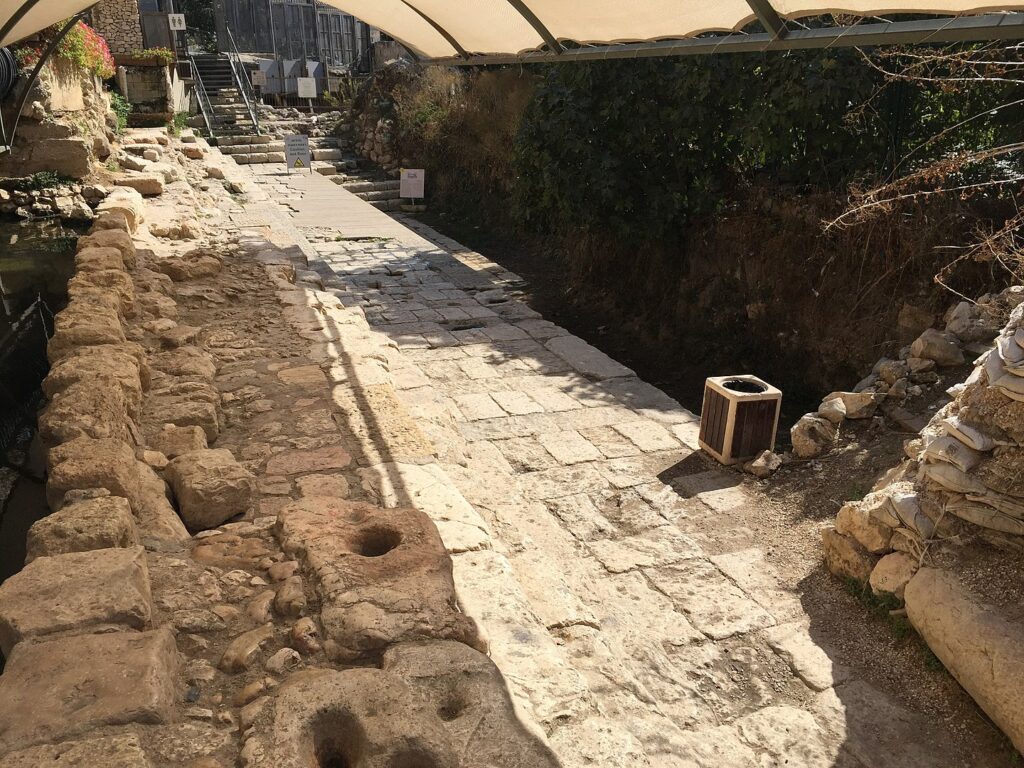The Pool of Siloam (also Siloah or Silwan) is a rock-cut pool on the southern slope of the City of David, the original site of Jerusalem. It’s located outside the walls of the Old City to the southeast and the pool was fed by the waters of the Gihon Spring, carried there by two aqueducts.


This pool has great biblical significance and is mentioned in both the Old and New Testaments:
- In the Old Testament, it is mentioned in the context of King Hezekiah’s efforts to fortify the city against the Assyrian siege. He rerouted the Gihon Spring’s water into the city by constructing a tunnel, which subsequently fed into the Pool of Siloam (Isaiah 8:6, 22:9-11; 2 Kings 20:20; 2 Chronicles 32:2-4, 30).
- In the New Testament, it is known for the miracle in which Jesus healed a man who had been blind from birth. Jesus made a paste with dirt and saliva, rubbed it on the blind man’s eyes, and told him to wash in the Pool of Siloam (John 9:1-11).
There are actually two pools associated with Siloam in Jerusalem. The first is the traditional Pool of Siloam from the Byzantine era, which was constructed and venerated by early Christians to commemorate the location of the miracle. This pool is located at the end of Hezekiah’s Tunnel.
The second is a recently discovered pool from the Second Temple period that is more likely to be the actual site where the miracle described in the Bible took place. It was discovered in 2004 during a construction project, and excavations revealed a pool with three tiers of steps on three sides. This newly discovered pool is located southeast of the traditional site.

